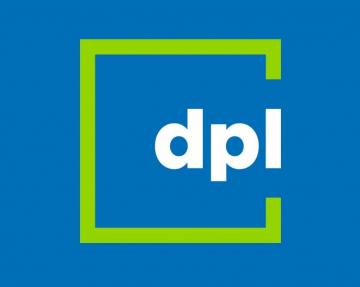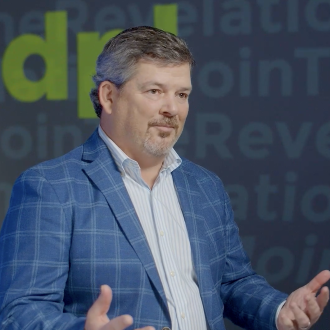The financial insurance and annuity industries are multi-trillion-dollar industries, and they should be. These products are important components of holistic financial plans for individuals and families. Life and disability insurance can help protect income during wealth building years while annuities provide secure lifetime income during retirement, which mitigates significant risks that can derail a retirement plan (like sequence risk and longevity risk), and that often are created by investments themselves. Frankly, with all the challenges of retirement today, a combination of investments and annuities are necessary to provide the income and security retirees crave.
But the insurance industry needs to evolve. Unlike most of the financial services world that has already migrated away from commission-driven sales, insurance products are still largely distributed through commissioned sales agents. And that creates a lot of problems for the end users—consumers—who need the benefits these products provide and the peace of mind that their best interests are being served. The costs of those commissions are built into the price of the products, so the consumer pays year after year for as long as they own the product.
To drive consumer value and transparency, commissions have to be removed from the products. The commissions that are built into the pricing of traditional products drive up costs significantly — anywhere from 25%-85% in my experience. So, consumers get far less for each dollar in the policy because so much of the initial premium and subsequent account growth is siphoned off to pay the agent their sales commission. And in products like annuities, cost is not often discussed, so the consumer rarely knows how much they are paying for the contract. For example, in a typical commissioned variable annuity, you might see an M&E charge of 1.40%, along with investment expenses around 1.00%, often with a rider fee of 1.25%, bringing the all-in costs for the product to 3.65%. In this example, a $200,000 policy would cost about $600 per month. How many other purchases do consumers make where they’re paying $600 per month for life without either making a conscious decision to do so or price shopping first?
Commissions also create a conflict of interest that cuts in two directions. First, for the commissioned salesperson, their interest is in selling a product – they do not get paid otherwise. And, since the commissions are generally quite generous, this compensation model can lead to some unscrupulous (and well-documented) sales practices. As a consumer, it’s hard to know if the product you’re being pitched is the best fit for your needs and if the amount of coverage recommended is appropriate or is being inflated by the salesperson to make a larger sale, and thus, a larger commission.
And then, for the fee-only advisor who does not accept commissions, insurance products (particularly annuities) create the opposite conflict. An advisor loses money when their client purchases an annuity using a portion of the assets the advisor is getting paid to manage—this can be a strong motivation to not recommend annuities to clients even when the annuity may be in the client’s best interest. And, can lead advisors to dismiss consideration of all annuity products for their clients, thereby shirking their fiduciary obligation.
And one final impact of commissions is less obvious but no less damaging to the products and their image. In a sales-driven world, product differentiation can be critical to success—after all, commissioned agents need bells and whistles to attract attention and drive product sales. This has led to complex features being designed into insurance products to make them seem special and different from competitors on the market. So much so that often hundreds of pages of prospectus documentation are required for each product, to the point that insurance professionals even struggle to make sense of it. It’s no wonder annuities are derided as complex, expensive and opaque products.
Given these facts, it becomes obvious that insurance needs modernization that starts with the elimination of the commissions from the products. When commissions are removed, costs are reduced, and value increased for consumers. Conflicts of interest go away for fiduciary advisors. And there is no longer a need to design complexity into products to drive differentiation and sales.
That said, eliminating commissions from insurance products is far easier said than done. There are many strong forces at work that need to be overcome. Insurance carriers need to rethink how they design and price products, and they risk alienating their current commissioned insurance distributors on whom they are dependent. For commissioned insurance agents, their livelihood is threatened. And for fee-only advisors who have long sold against annuities to preserve AUM, their argument is null and they now have to rethink their approach to the financial plan.
The vision of bringing these important products to consumers at better value is why I founded DPL Financial Partners. At DPL, we are driving the disruption of the multi-trillion-dollar insurance industry and seeing progress each day. In the 3 years since going to market, we now work with 20 leading insurance carriers (and growing all the time) to bring commission-free insurance products to market, including life, annuities, disability, and long-term personal care. In addition, we are developing proprietary “product discovery” technology that helps advisors and consumers find the most cost-efficient products that meet their needs, determine appropriate coverage, and compare annuity solutions to investment alternatives. In an industry where price and value are rarely discussed, we are bringing these criteria to the forefront of product design and distribution and saving consumers thousands of dollars in annual fees.
At a time when Americans need these products most – as interest rates hover near 0%, as traditional fixed income investments are no longer able to fund retirement, as retirements are expanding to 30+ years, as pensions are disappearing and self-funding retirement is the norm – DPL is disrupting insurance to ensure consumers’ best interests are at the forefront of product design, discover and distribution and fiduciary advisors are able to provide better financial planning with value-driven solutions and the technology to evaluate and implement them.
We call it the “Revelation” and it will change the insurance landscape in the same way Schwab changed the mutual fund business with OneSource four decades ago. It’s time to Join the Revelation of commission-free insurance and the value, transparency and accessibility it offers advisors and consumers.










